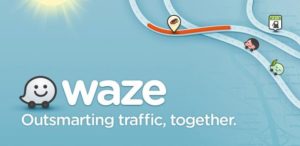Waze. Who? Waze. They may be new on the scene, but you’re going to be hearing a lot about them from here on out. Waze is an iOS map and navigation app that was just purchased by Google for an estimated, and whopping, $1.1 to $1.3 billion.
Who or What is Waze?
As we stated, Waze is an interactive navigation and mapping app with approximately 50 million users. Based in Israel and Palo Alto, CA, the app was launched in 2008. This free app offers turn-by-turn navigation for both iOS and Android systems. Since its launch, it has raised approximately $67 million in outside funding from such prominent sources as Kleiner Perkins and Horizons Ventures.
Waze separates itself from other mapping and navigation apps with its crowdsourcing formula. Instead of trying to map out each and every street around the world, Waze relies on its users to provide detailed information as they drive. Users provide information on accidents, traffic jams, construction, speed, locations, best routes, and other travel information building out the app’s maps in real time. This crowdsourcing formula creates an addictive experience for users who are able to report back a wide variety of information ranging from gas prices to speed traps to points of interest. As more users come on board, the app becomes more robust, more reliable and more effective.
Who Wanted Waze?
Google wasn’t the only one who wanted to add Waze to their empire. Other big tech companies courted Waze before Google swept in and won the prize. With all the major tech companies in need of reliable and effective mapping programs, it seemed Waze was ripe for a buyout. Waze offered what all tech companies need – a reliable, easy to use navigation and mapping program with a nice base of 50 million followers to boot.
Apple was the first to come knocking on Waze’s door. Apple reportedly came in with a $500 million bid. This was a logical match. Apple struggled with the roll out of their own proprietary mapping system. Waze would have helped Apple to recover from this somewhat embarrassing misstep. For whatever reasons, this match didn’t work out.
Then Facebook came to the table. Facebook was reportedly in talks with Waze when Google came knocking. The Facebook offer reportedly came in at a very respectable $1 billion. The Facebook-Waze partnership would also have made sense given Facebook’s recent push to enter the mobile game. But Google came in with the big offer and closed the deal.
Why Google?
So why Google? Waze offers Google’s current mapping system some upgrades they don’t currently have including real time updates and additional routes to avoid traffic. The Waze experience is more interactive and fun. It offers something to users that Google’s current mapping system simply can’t and, while that doesn’t seem like much, over the long term it offers value to Google.
Then there’s the social aspect that Waze offers. Waze has a social networking side that Google can tap into to boost up Google+. Currently Waze offers a single sign on with Facebook, which would make sense for Google to replace with Google+. Waze also offers users the ability to see which friends are on the same route to events, the ability to share drives, to communicate from the road, and to choose meet up spots. All of these social aspects offer value to Google.
Google’s acquisition of Waze also brings an advertising component into the equation. While Waze hasn’t been focused on monetizing its product, it can now turn its attention to building out this portion of its brand. Late in 2012, Waze was already looking at ways to build out ads within the app by allowing businesses to claim their spot on the map and send out targeted messages to people driving nearby. This jives nicely with Google’s ad strategies.
It does seem as though the acquisition of Waze was a good deal for Google. It took a potentially valuable app out of the hands of the competition and added some valuable technology and intellectual property to Google’s already overflowing toolbox. It remains to be seen how the other major tech companies will respond.




